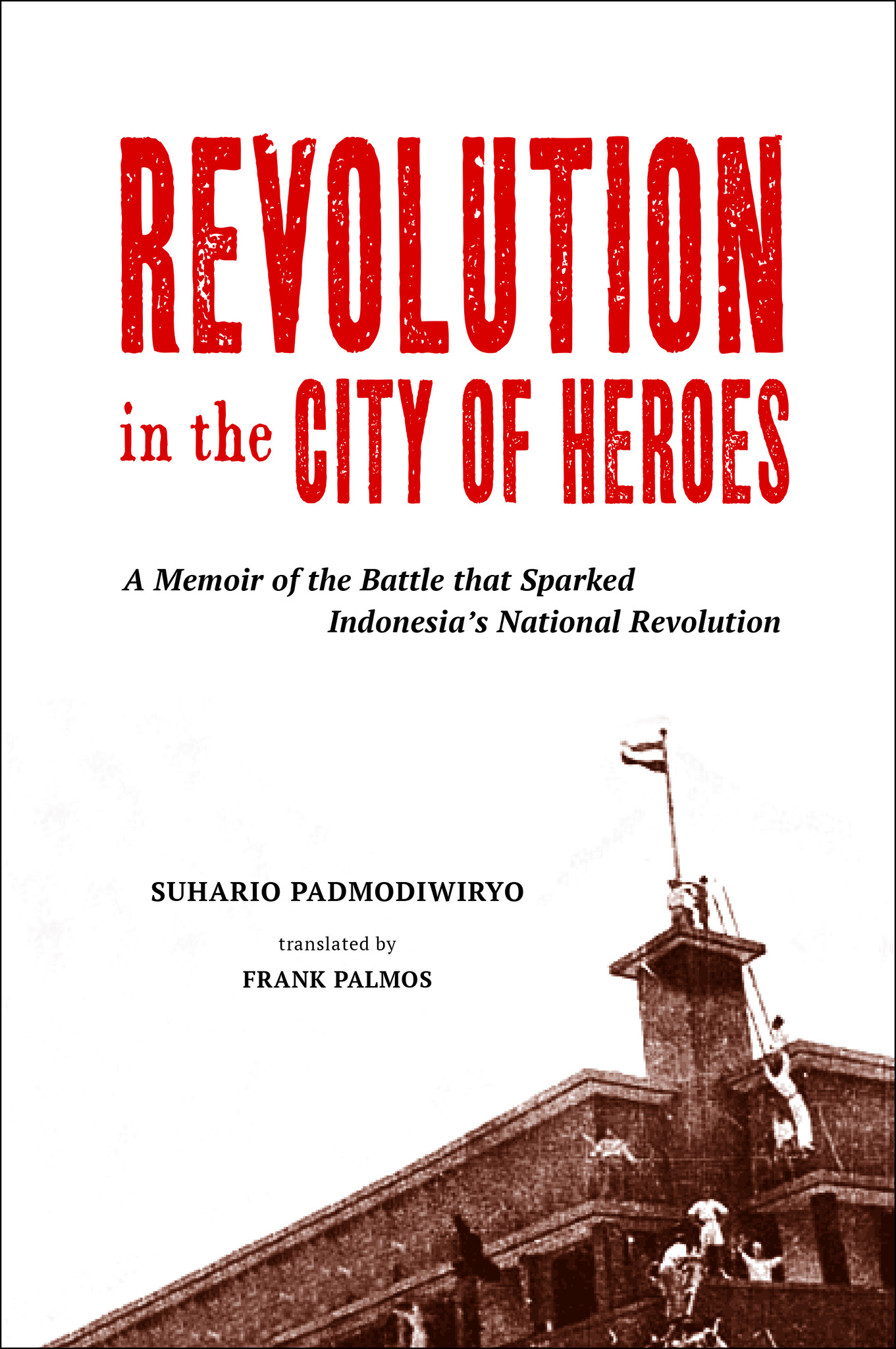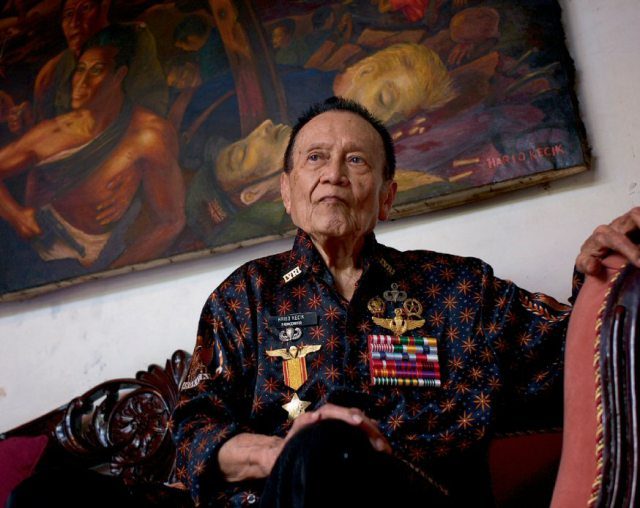
Suhario ‘Kecik’ Padmodiwiryo. Photo: ISTIMEWA/ FRONTROLL.COM
Duncan Graham takes a look at a compelling memoir about an uprising — and the power of nationalism in Indonesia.
The walls against comprehending other nations are high, topped with shards of real or manufactured history, reinforced with rocks of culture.
One of the most unassailable is almost close enough to coo-ee – yet despairingly distant.
Indonesians are not like Australians though the Southeast Asian nation is now a democracy, albeit embryonic. It has a robust press and lively social media. After that similarities stumble.
Melbourne Law School Professor Tim Lindsey told a Perspectives: Asia seminar last year: ‘There may be no two neighbouring countries that have such significant differences of language, culture, history, ethnicity and religion as Australia and Indonesia.’
How to diminish these differences? Along with learning the language, understanding the forces that created modern Indonesia can help. Like the brutal Battle of Surabaya in late 1945, source of today’s defiant nationalism.
It started as a victory, but like Gallipoli for the Allies in World War I, it turned into a defeat. British-led Gurkha troops sent to rescue 70,000 European prisoners of the Japanese did not expect resistance.
They laughed off Sukarno’s proclamation of independence on 17 August in Jakarta and set about restoring Dutch rule, even using the hated Japanese troops to maintain order.
The invaders encountered little opposition in the capital and other centres, but the principal port of East Java was no pushover. It became the real birthplace of the Republic.
Thousands of young men and women who called themselves Arek Suroboyo (Children of Surabaya) launched mass attacks on Japanese armouries. They used the captured weapons against the British who had been told the Dutch would be welcome back as ‘parents’.
So much for military intelligence and colonial arrogance. In the first encounter about 600 troops were killed and the British garrison almost destroyed.
The reversal began with the assassination of Brigadier Aubertin Mallaby. The foreign forces started bombing defenceless kampongs and thousands fled south. The fighting climaxed on 10 November, now recognised as National Heroes’ Day.
As Dr Frank Palmos writes in Student Soldiers, his translation of medical student turned street fighter Suhario ‘Kecik’ Padmodiwiryo’s memoirs: ‘Kecik’s book corrects the common, mistaken assumption that Indonesia was free from the day independence was proclaimed’.
The late journalist and novelist Mochtar Lubis helped found the literary centre Obor (Torch) which has published Student Soldiers. He urged youngsters to read Kecik’s autobiography to understand the ‘great sacrifices’ made for independence.
With Palmos’ translation that understanding is now accessible – and not to be missed by anyone trying to appreciate the essence of the islands beyond Bali.
Palmos worked as a foreign correspondent in Jakarta before the 1965 coup that brought down Sukarno. The young reporter had a degree in Indonesian studies from Melbourne University and superior language skills.
He used these to interpret the President’s speeches to monolingual diplomats, and get closer to local sources.
Among them was revolutionary leader Dr Roeslan Abdulgani who’d been Foreign Minister in the 1950s and later Ambassador to the UN. While in New York he was impressed by the way Americans cherished their history and decided this was one Western value worth importing.
His book about the nation’s birth, One Hundred Days in Surabaya that Shook Indonesia (Jakarta Agung Offset), was translated by Palmos into English in 1995. Now we have a guerrilla perspective of the times ‘when boys became men’.
Palmos considers Kecik ‘the brightest literary star to emerge from Surabaya’. He was able to write his memoirs only through the law of unintended consequences applied by Suharto.
The kleptomaniac general overthrew Sukarno, became president and ran his authoritarian Orde Baru administration for 32 years. He maintained power by being staunchly anti-communist which at first won him Western backing.
Kecik had received military training overseas, first in the US, then in Russia. Despite his revolutionary credentials the fact that he’d been in Moscow made him a suspect fellow traveller when the communist purge was underway.
Instead of being shot or jailed like many others, the Brigadier General was sentenced to home detention. With idle time he set about writing his story. Meanwhile Suharto was getting others to develop an alternative history with himself at the centre, and his predecessor reduced to being just the fringe-dwelling Proclamator.
Palmos worked with Kecik on the translation and filled the gaps with interviews. The old man died in 2014 aged 93, satisfied that his story would now get a wider audience.
And what a yarn. Kecik was studying at the Bogor Veterinary School because the Japanese had closed medical colleges. He made occasional train trips to Surabaya where he found a different mood: ‘The local people were starting to stand up to them (the Japanese) in sharp contrast to the passivity we experienced in Jakarta’.
It’s a theme that runs through the book – talk in the capital, but action in East Java. So when the new government of Sukarno ordered the Arek Suroboyo to cease fire there was little chance the instruction would be obeyed.
The rebels were ill disciplined and the many clashes impossible to control. A boy climbed a flagpole at the Hotel Oranje (now Majapahit) where colonialists were organising their reinstatement. He ripped down the Dutch tricolour and tore off the bottom blue strip. The newly-ripped red and white was hoisted and it was game on.
To the colonialists the youngsters were a rabble. Kecik called them ‘an organic body.’ Strange things happened. When one band entered an armoury they found the Japanese troops guarding the place like robots. With no orders the men stared ahead while the astonished rebels looted the place.
The book is all the more authentic because it doesn’t paint a monochrome picture. Some of the rebels were sadists, killing and torturing prisoners of war. Casual events triggered major responses. The kids were driven by one cry Merdeka! (Freedom!) Nothing else mattered.
Indonesia is tagged in the media as Islamic — as though this is the one and only driver of the Republic. Nationalism is more powerful. This book reveals why.

Student Soldiers has also been published by NUS Press in Singapore under the title Revolution in the City of Heroes.
Australian journalist and author Duncan Graham lives in East Java and writes for the Indonesian media.
 Facebook
Facebook  Twitter
Twitter  Soundcloud
Soundcloud  Youtube
Youtube  Rss
Rss 